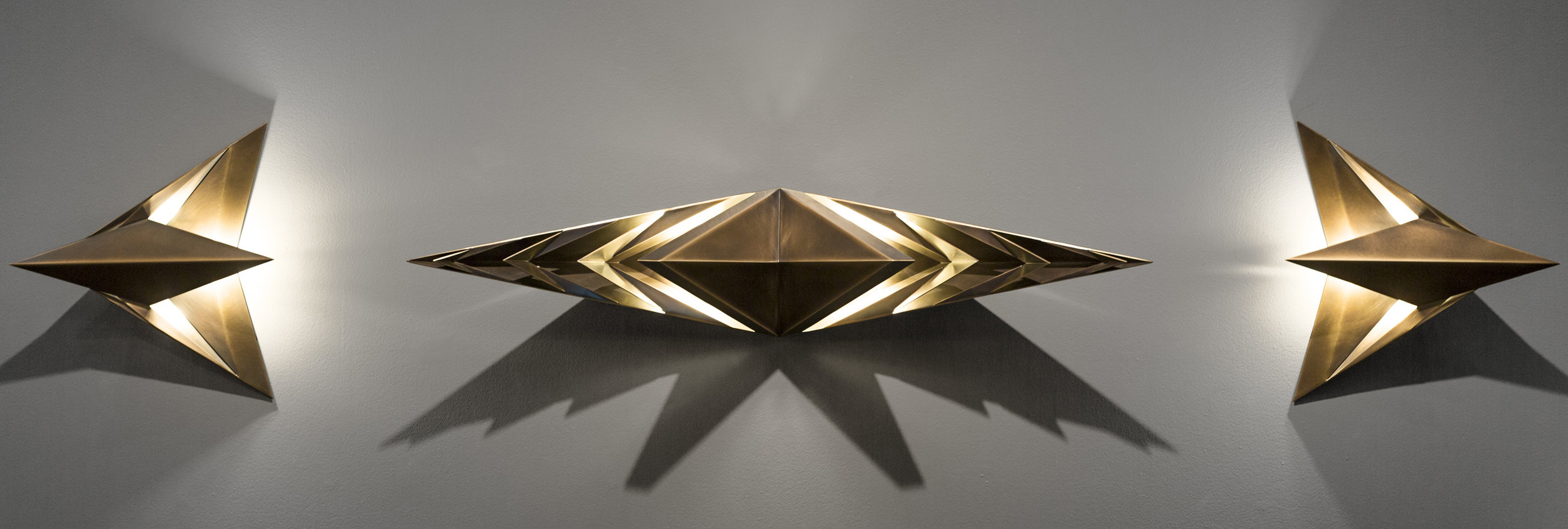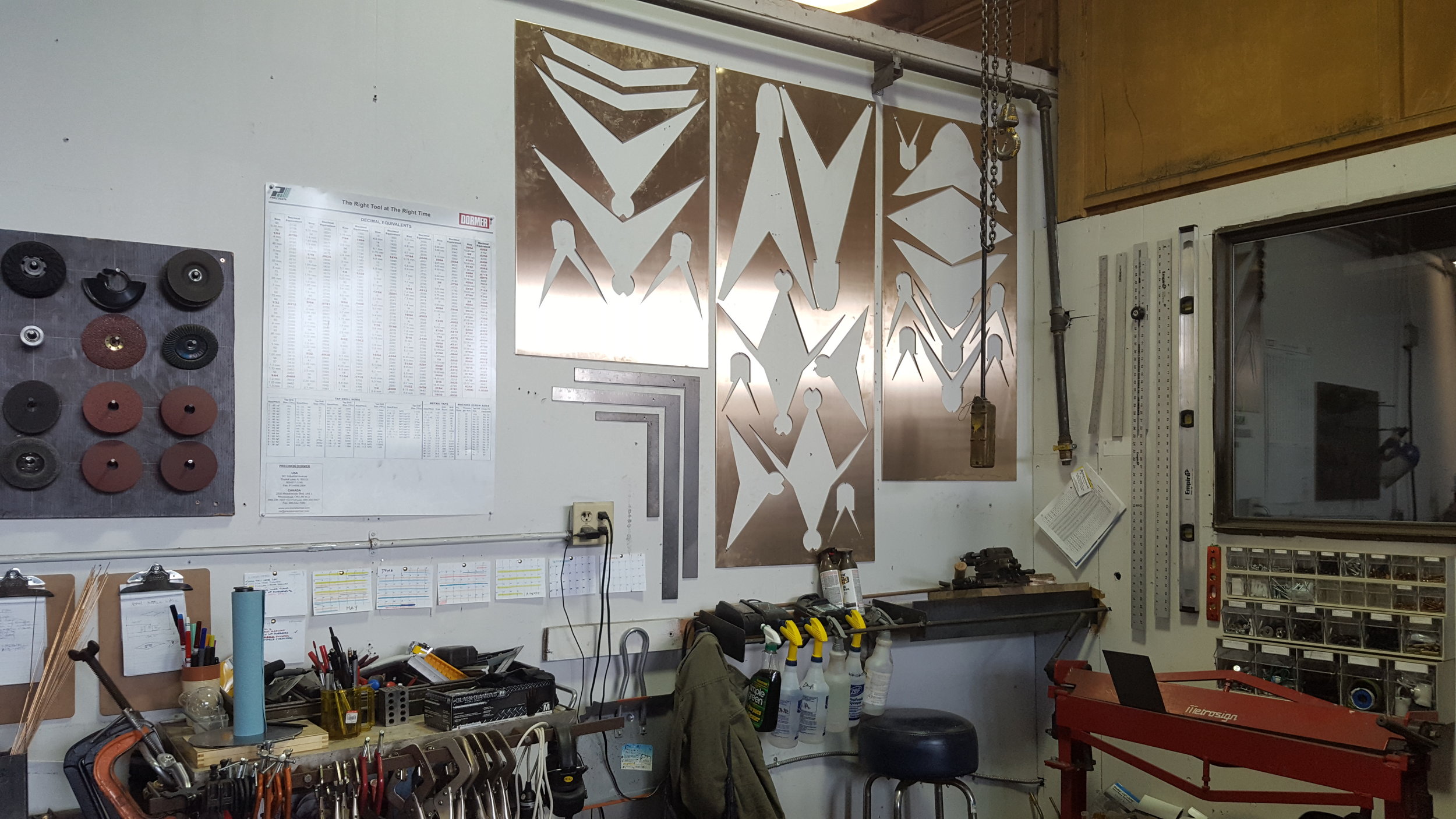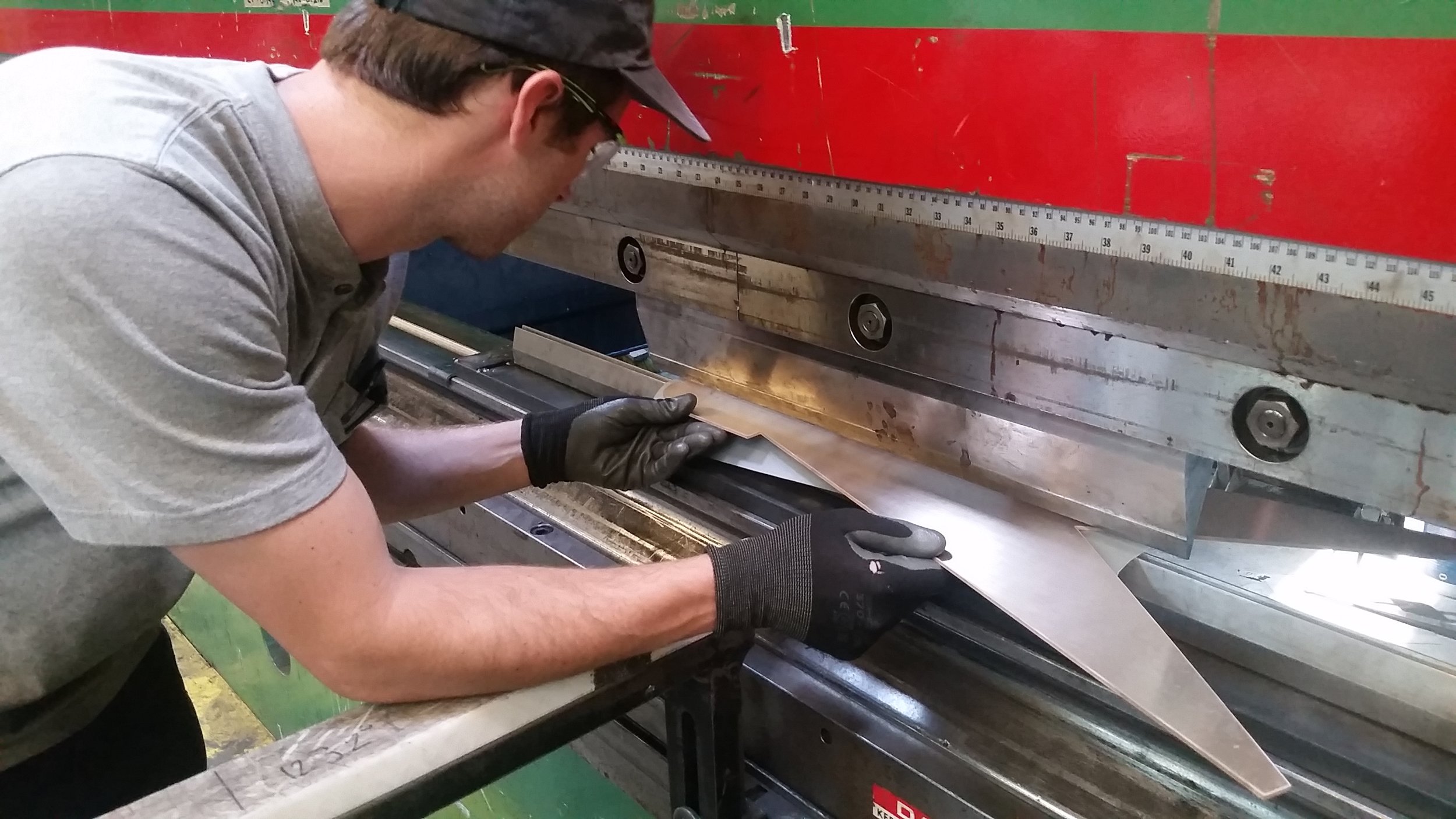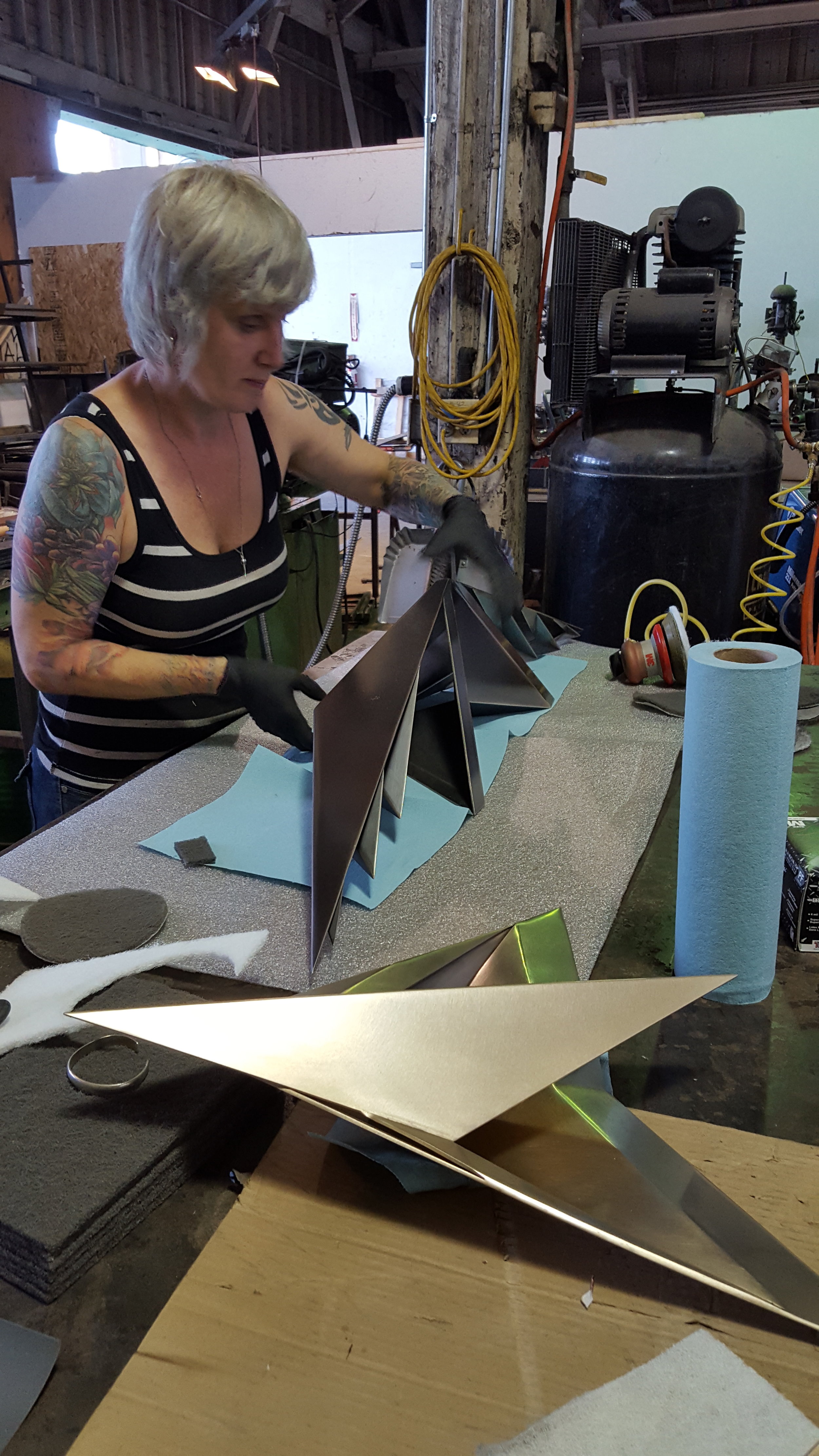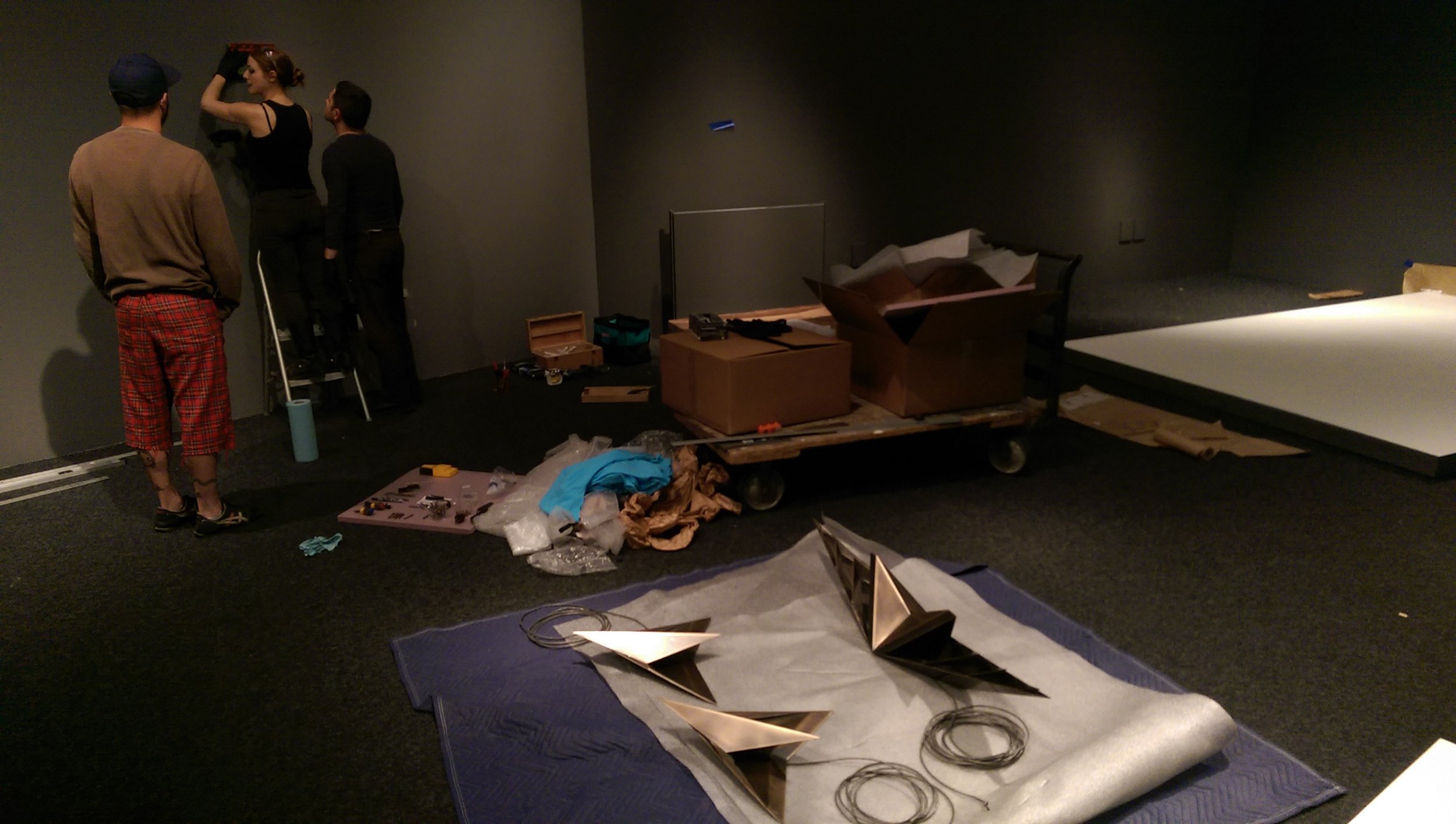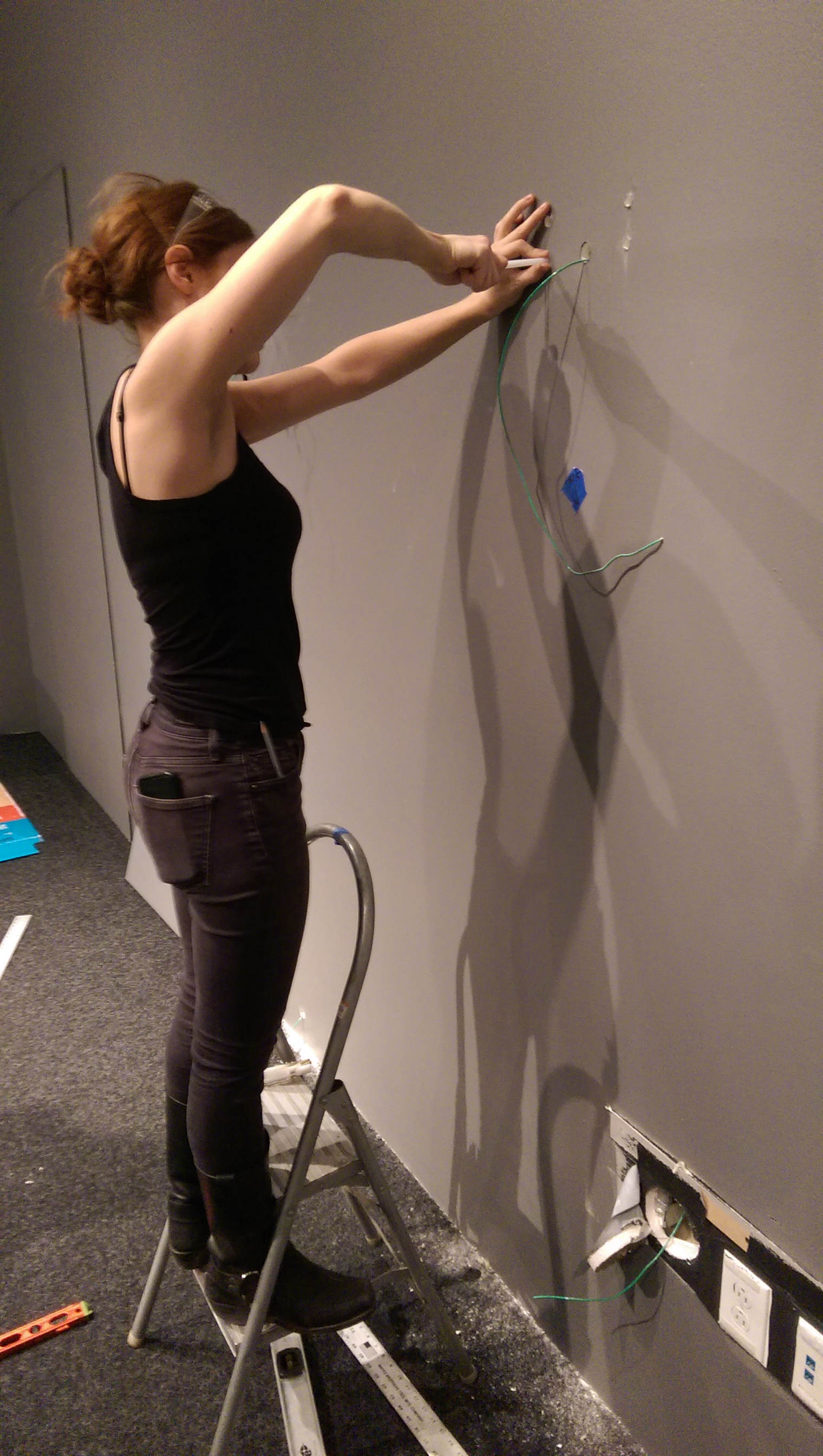Parenthetical Light | Fabricated silicon bronze | 19.5 x 105 x 9" | Photographs by Christopher Eltrich
Parenthetical Light is a series of silicon bronze, wall-mounted lighting that spans 9 feet across. From conception, the most prominent functional goals were three-fold: how to shape light in an extremely controlled way with an opaque and partially reflective material, how to use the light to emphasize the material, and at the same time how to make fixtures that function as sculptures whether the light is off or on. Click here to view photos of the completed project.
Here's an inside look at how the project came together over six months and the many vital contributions from colleagues.
PROTOTYPING
The project began by building several steel prototypes that were used to refine all the final design choices and cut down on waste. Everything from proportions and significant mathematical relationships to fittings and mounting systems were determined in the modeling process. The creative and technical consults of Jonathon Carmichael, Zack Wait and Brian Raber were crucial throughout this process.
PROOFING
Another preliminary step was to test the properties specific to my chosen material in relation to the fabrication techniques that would be applied in the design. James Reinhardt and his crew at Pacific Sheet Metal worked with me to orchestrate a series of brake forming tests with the silicon bronze sheet that would be used in the final product. The result was that I was able to dial in which machines, dies and techniques would allow me achieve the look I wanted and plan for potential problems ahead.
CAD MODELING
The testing process was also integral to the next step - CAD modeling. Industrial designer Yale Wolf used my physical model to generate a digital rendering, capitalizing on the foresight our experimentation and making special alterations to each piece that would reduce problems and flaws in the final product.
WATER JET CUTTING
Now that all the steps were broken down by working backward from a rough model, bronze was ready to be cut. The CAD drawings were sent to DaVinci’s Workshop for water jet cutting in a flat layout. The choice to use CAD and waterjet afforded me an unrivaled accuracy that would directly benefit every step from that point on. After cutting, many of the parts underwent a rigorous brake-forming process back at Pacific Sheet Metal. Within an accuracy of less than 1 degree, Trevor Alderfer and Yale Wolf diligently improvised the manual operation of a 20’ industrial bender on soft and delicate bronze.
STRUCTURE & STAGING
Meanwhile, I built all the French cleat mounting systems from solid silicon bronze and exhausted the market for the perfect LED tube lights. I also began testing various patinas and application techniques and preparing for the process to be as smooth as possible.
FABRICATION
Though the parts had begun to take shape, the fabrication had barely begun. Due to the nature of the high finish I was planning, the construction of the final pieces was very much a series of refinement through which parts were pre-finished and filed, edges dressed and styled . Every plane had to be rigorously sanded to a high grit, near polished quality and every die mark removed. After the surface of the bronze was broken down and refined, the parts began to be fitted and TIG welded, then sanded, buffed and filed again in many repetitions.
PATINA
When the build was finally complete, the last and, in some ways, most important step was the patina. Many preparations had been invested to customize a 50-gallon immersion process. Metal finisher Marie Trybulski skillfully orchestrated the final steps and, by hand, highlighted intersections of each plane to reveal the facets of the bronze. Wax was then carefully layered in the days to come to ensure longevity in the lifespan of the patina.
INSTALLATION
Finally, each light was carefully wired and packed for installation, which was successful thanks to the assistance of Brian Raber, Zack Wait and Yale Wolf.
Bellevue Arts Museum threw a fantastic preview party the night before the show opening to the public. The exhibition is on view until February 5, 2017.



